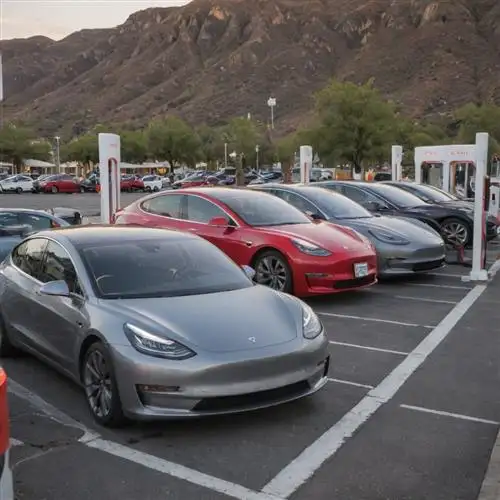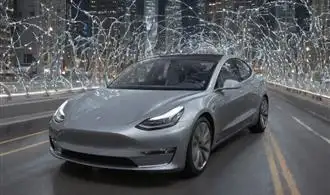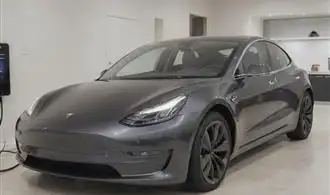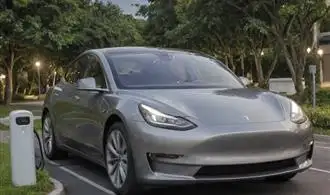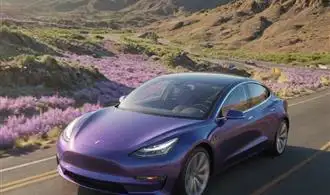
Tesla Model 3 Charging Infrastructure is Expanding Rapidly
The expansion of Tesla's charging infrastructure has been a game-changer for Tesla Model 3 owners. With the company's commitment to building a vast network of Supercharger stations, charging a Tesla Model 3 has become increasingly convenient and accessible. Tesla's Supercharger network now spans across the globe, with over 30,000 Superchargers installed worldwide, making it the largest fast-charging network in the world.
What sets Tesla's Supercharger network apart is its strategic placement. The stations are located along major highways and in high-traffic areas, ensuring that Tesla owners can easily find a charging spot during long-distance travels. These Superchargers are designed to provide a fast and efficient charging experience, with the ability to add up to 175 miles of range in just 15 minutes.
Beyond the Supercharger network, Tesla has also been collaborating with various partners to expand its destination charging options. These include hotels, restaurants, shopping centers, and other businesses that have installed Tesla charging stations on their premises. This allows Tesla owners to charge their vehicles while they're enjoying other activities, further enhancing the convenience of owning a Tesla Model 3.
The company's commitment to expanding its charging infrastructure is not limited to its own network. Tesla has also embraced the broader electric vehicle (EV) charging ecosystem, allowing its vehicles to use other non-Tesla charging stations through the use of adapters. This flexibility ensures that Tesla Model 3 owners have access to a wide range of charging options, regardless of their location.
One of the key benefits of the expanding Tesla charging infrastructure is the peace of mind it provides to Tesla Model 3 owners. With the assurance of ample charging options, they can enjoy their driving experience without the constant worry of finding a charging station. This has contributed to the growing popularity and adoption of the Tesla Model 3, as more and more people recognize the convenience and accessibility of the vehicle's charging capabilities.
Intelligent Charging Optimization Reduces Charging Time
Tesla's advanced charging technology in the Model 3 goes beyond the typical plug-and-charge experience. The vehicle's intelligent charging optimization system ensures you get the most out of every charging session, reducing the time required to restore your battery to full capacity. This innovative approach leverages a range of factors to streamline the charging process and provide a seamless, efficient experience for Tesla owners.
One of the key features of the Model 3's charging optimization is its ability to adapt to the specific electrical infrastructure of your home or charging location. The vehicle's onboard computer analyzes the available power supply and adjusts the charging parameters accordingly, ensuring it draws the maximum current without tripping breakers or overloading the system. This dynamic adjustment not only reduces charging time but also helps to prolong the lifespan of your home's electrical system.
Another important aspect of the Model 3's intelligent charging optimization is its ability to predict charging patterns and behaviors. By analyzing your driving habits and charging history, the vehicle can anticipate your future charging needs and adjust the charging rate accordingly. For example, if the car knows you typically charge at home in the evening, it can begin the charging process earlier in the day to take advantage of off-peak electricity rates, further reducing the time required to reach a full charge.
The Model 3's charging optimization also takes into account environmental factors, such as temperature and humidity, to optimize the charging process. In colder climates, the vehicle will automatically adjust the charging rate to maintain the battery's optimal temperature, ensuring efficient charging even in challenging conditions. Similarly, in hot environments, the system will regulate the charging rate to prevent overheating and maintain the battery's long-term health.
Seamless Integration with Tesla Mobile App Enhances Charging Experience
The Tesla Model 3's compatibility with the Tesla mobile app is a game-changer for the charging experience. This integration elevates the process, making it more intuitive, efficient, and convenient for owners. By leveraging the app, Tesla Model 3 drivers can take control of their charging needs with just a few taps on their smartphone.
One of the standout features is the ability to remotely monitor and manage the charging status. The app provides real-time updates on the vehicle's battery level, charging progress, and estimated time of completion. This allows owners to stay informed and make informed decisions about their charging schedule, whether they're at home, work, or on the go.
The integration also enables remote charging control. Drivers can start, stop, or adjust the charging rate directly from the app, ensuring they have the power they need without the hassle of physically interacting with the charging equipment. This is particularly useful when charging the vehicle at public stations or in scenarios where the charging port may be difficult to access.
Another valuable aspect of the Tesla mobile app is its ability to locate and navigate to nearby charging stations. The app's comprehensive charging network database provides users with a seamless way to find available charging options, plan their routes, and initiate the charging process before arriving at the destination.
In addition, the app's integration with the vehicle's climate control system allows owners to precondition the cabin temperature while the car is charging. This ensures the vehicle is ready to go with the desired climate settings, enhancing the overall driving experience and reducing the need for manual adjustments upon departure.
Tesla Model 3 Supports Faster Level 2 Charging for Home and Public Use
One of the standout features of the Tesla Model 3 is its ability to support faster Level 2 charging, both at home and in public charging stations. This capability significantly enhances the convenience and accessibility of charging the vehicle, making it a more practical choice for daily driving and long-distance travel.
The Tesla Model 3 comes equipped with a robust on-board charger that can handle up to 48 amps of current, enabling it to charge at a rate of up to 11.5 kilowatts. This is a substantial improvement over the standard Level 1 charging, which typically provides around 1.4 kilowatts of power. The faster Level 2 charging allows the Model 3 to replenish its battery much more quickly, reducing the time required to fully charge the vehicle.
At home, Tesla owners can install a dedicated Level 2 charging station, such as the Tesla Wall Connector or a compatible third-party solution. These chargers can provide the full 11.5 kilowatts of power, allowing the Model 3 to add up to 44 miles of range per hour of charging. This makes it easy to keep the vehicle charged and ready for daily commutes or weekend adventures.
In public, the Tesla Model 3 can take advantage of the growing network of Level 2 charging stations. These stations are becoming increasingly common at shopping centers, workplaces, and other public locations, providing convenient charging options for Tesla owners on the go. The Model 3's support for faster Level 2 charging ensures that it can take full advantage of these public charging stations, minimizing the time needed to top up the battery during stops.
Furthermore, the Tesla Model 3's charging capabilities are designed to be both efficient and user-friendly. The vehicle's charging port is conveniently located, making it easy to connect the charging cable. The car's onboard software also provides real-time updates on the charging status, allowing owners to monitor the progress and plan their charging sessions accordingly.
Cost-Effective Charging Solutions Make Owning a Tesla Model 3 More Accessible
As an owner of a Tesla Model 3, I can attest to the ease and cost-effectiveness of charging this electric vehicle. One of the most surprising aspects is the variety of charging solutions available that make owning a Tesla Model 3 more accessible than many might think.
For starters, Tesla's extensive Supercharger network across the globe provides a reliable and efficient way to charge your vehicle on the go. These Superchargers are strategically placed along major routes, allowing you to quickly top up your battery during longer road trips. The charging speeds are impressive, delivering up to 200 miles of range in as little as 15 minutes, ensuring you can get back on the road with minimal downtime.
But the convenience of charging doesn't stop there. Tesla also offers a range of home charging solutions, including the Wall Connector, which allows you to conveniently charge your Model 3 overnight in the comfort of your own garage. The Wall Connector delivers up to 44 miles of range per hour, making it a cost-effective and efficient way to keep your battery topped up. And with the ability to schedule charging during off-peak hours, you can further optimize your energy costs and take advantage of reduced electricity rates.
For those without a dedicated garage or driveway, Tesla has also made significant strides in providing public charging options. Many shopping malls, office buildings, and municipal parking lots now offer Tesla Destination Charging stations, allowing you to charge your vehicle while you're at work or running errands. These charging stations are often free to use or come at a nominal cost, making them an accessible and budget-friendly option for Tesla Model 3 owners.
Furthermore, the Tesla Model 3 is compatible with a wide range of third-party charging solutions, including Level 2 chargers that can be installed at your home or workplace. These chargers can provide a significant boost to your vehicle's range, often delivering up to 25 miles of range per hour of charging. By taking advantage of these alternative charging options, you can further reduce the overall cost of owning and operating your Tesla Model 3.
Innovative Battery Technology Enhances Charging Efficiency and Range
The Tesla Model 3's battery technology sets it apart from traditional electric vehicles. Its lithium-ion battery pack features a unique cell chemistry and sophisticated thermal management system that optimizes charging efficiency and extends the car's driving range. This innovative approach to battery design has significant implications for the charging experience.
The Model 3's battery cells utilize a nickel-cobalt-aluminum (NCA) chemistry, which offers higher energy density compared to the more common nickel-manganese-cobalt (NMC) cells found in many other electric vehicles. This translates to a more compact battery pack that can store more energy in the same physical space. The result is a longer driving range, with the Long Range Model 3 capable of up to 353 miles on a single charge.
Equally important is the car's thermal management system, which actively regulates the temperature of the battery pack during charging and driving. By maintaining the cells within an optimal temperature range, the system prevents heat buildup that can degrade battery performance and lifespan. This thermal management allows the Model 3 to charge at higher rates, reducing the time needed to replenish the battery.
The Model 3 can accept charging speeds of up to 250 kW on Tesla's proprietary Supercharger network, which is among the fastest charging rates available for production electric vehicles today. This rapid charging capability means Model 3 owners can add significant mileage to their car's range in a matter of minutes, reducing the time spent waiting for the battery to recharge.
Moreover, the Model 3's battery management system is designed to intelligently optimize charging based on factors such as the state of charge, ambient temperature, and the car's current and projected energy needs. This ensures the battery is charged efficiently, without overexerting the cells or compromising their long-term health.





